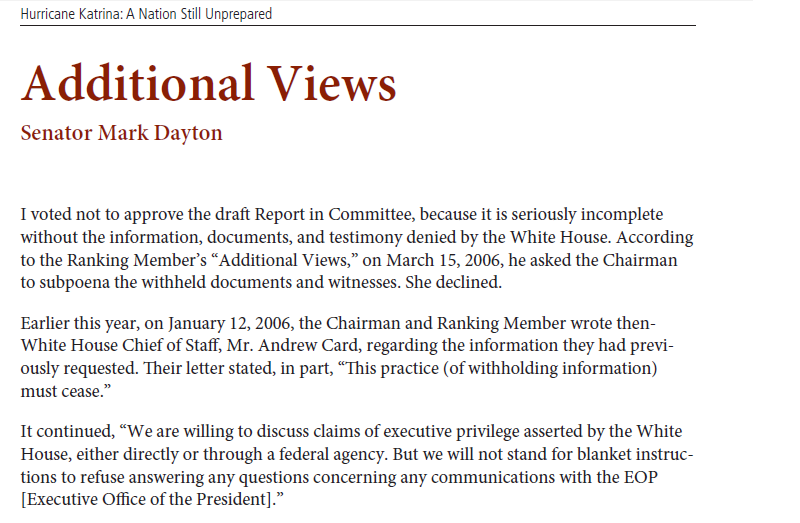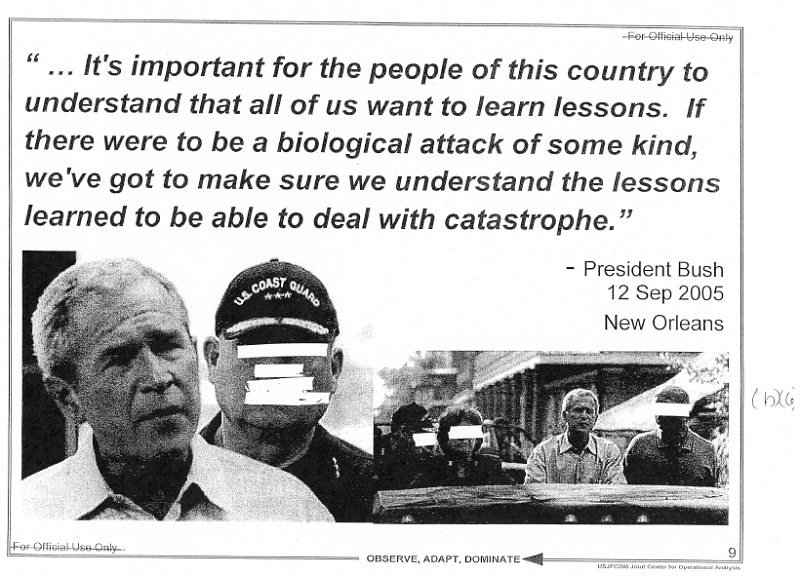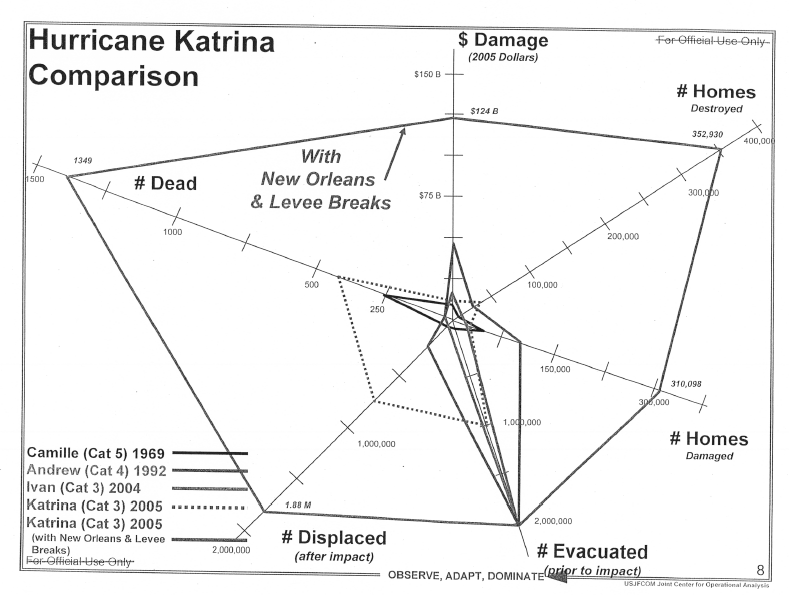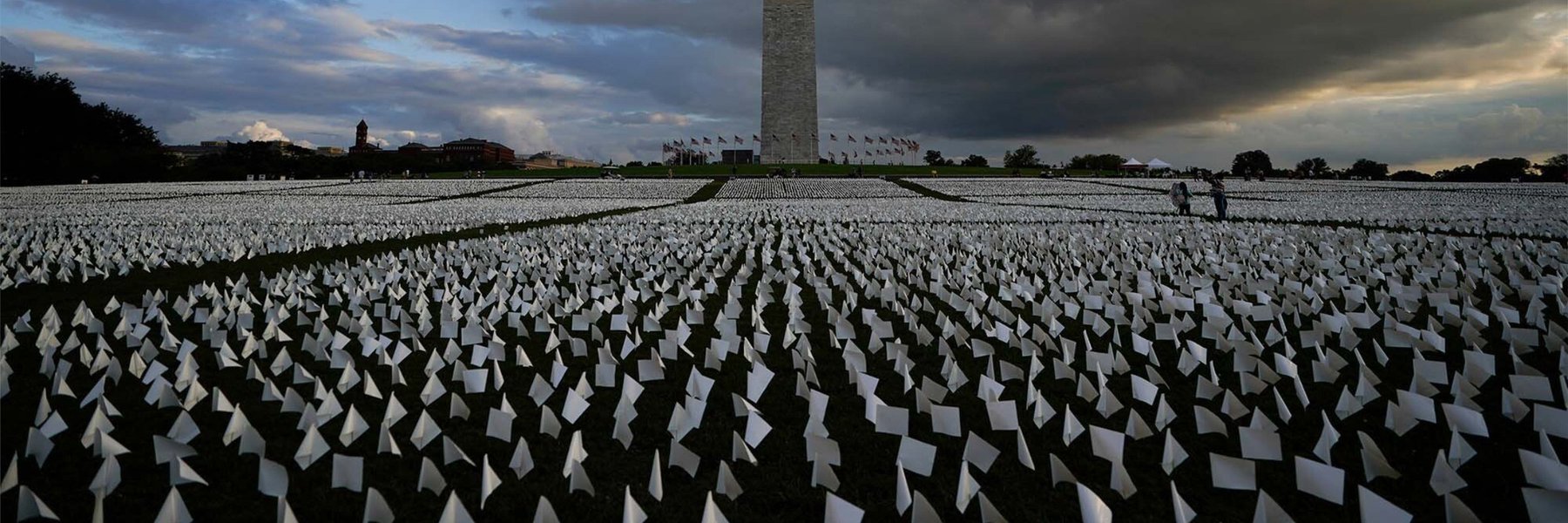Tomorrow marks the 10th anniversary of Hurricane Katrina’s landfall in the gulf. Numerous news outlets, and a few federal agencies - most notably FEMA - have taken the opportunity to reflect on the storm and the nation’s response to it, benefiting from a decade of perspective. However, comparatively little attention has been paid to those reports created in the immediate aftermath, when the experience was fresher - and more painful - in people’s minds.
There’s two documents that are particularly worth a look, especially in comparison to one another.
The first is the official report from the Senate’s Committee on Homeland Security and Governmental Affairs.
It’s a very slick and well-designed document, with some stunning photography courtesy of the Coast Guard, FEMA, and The Times Picayune … though personally, I found the little hurricanes on the page numbers to be a bit much.

Don’t be fooled by appearances though - this is a very ugly, and very political report, primarily concerned with placing blame. Like its counterpart in the House Committee on Hurricane Katrina, every chapter outlines a new failure on a different level of government, and the last two hundred pages alone are arguments that the report shouldn’t even exist, due to the lack of participation on behalf of the Executive.

In stark contrast is the Department of Defense’s “Applying the Lessons of Hurricane Katrina,” which MuckRock’s Shawn Musgrave obtained via FOIA back in 2012.
It’s a much uglier document - rather than place redaction blocks on people’s faces for the privacy exemption, the FOIA officer just scratched out their eyes, nose, and mouth, giving it a oddly incongruous ‘zine aesthetic - but where the Senate report was all about who was responsible, this report is focused on why it happened.
That mission statement’s right there in the beginning, captured in Dubya’s idiosyncratic take on the English language.

George LeVine’s wrote an analysis of the report here, and rather than re-hash his points, I’ll just recommend you read it. I’ll just say that for me, as a displaced New Orleanian, the most striking detail is the comparison of the damage from 1969’s Hurricane Camille - a Category 5 storm …

To Hurricane Katrina’s comparatively weaker Category 3.

A powerful - and distressingly relevant - depiction of what happens when you neglect your infrastructure.
Taking both documents together, I can’t help but note that one was widely distributed and easily available - you can read the executive summary of the Senate report on the New York Times - and the other was only released via Shawn’s request, and even then only in part - 265 pages were withheld in their entirety.
And yet I found that only one of them helped me get a better understanding of what actually happened ten years ago, and why. I’m going to take that lesson to heart and keep on filing.
Image by Bill Koplitz via FEMA.gov




